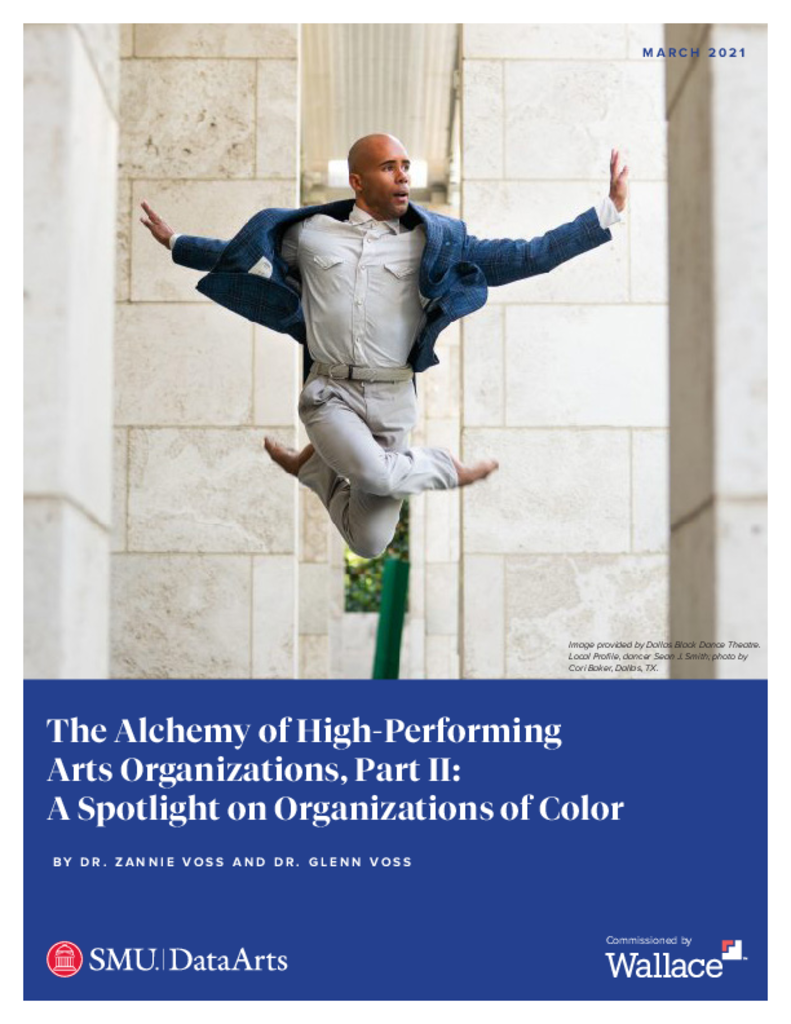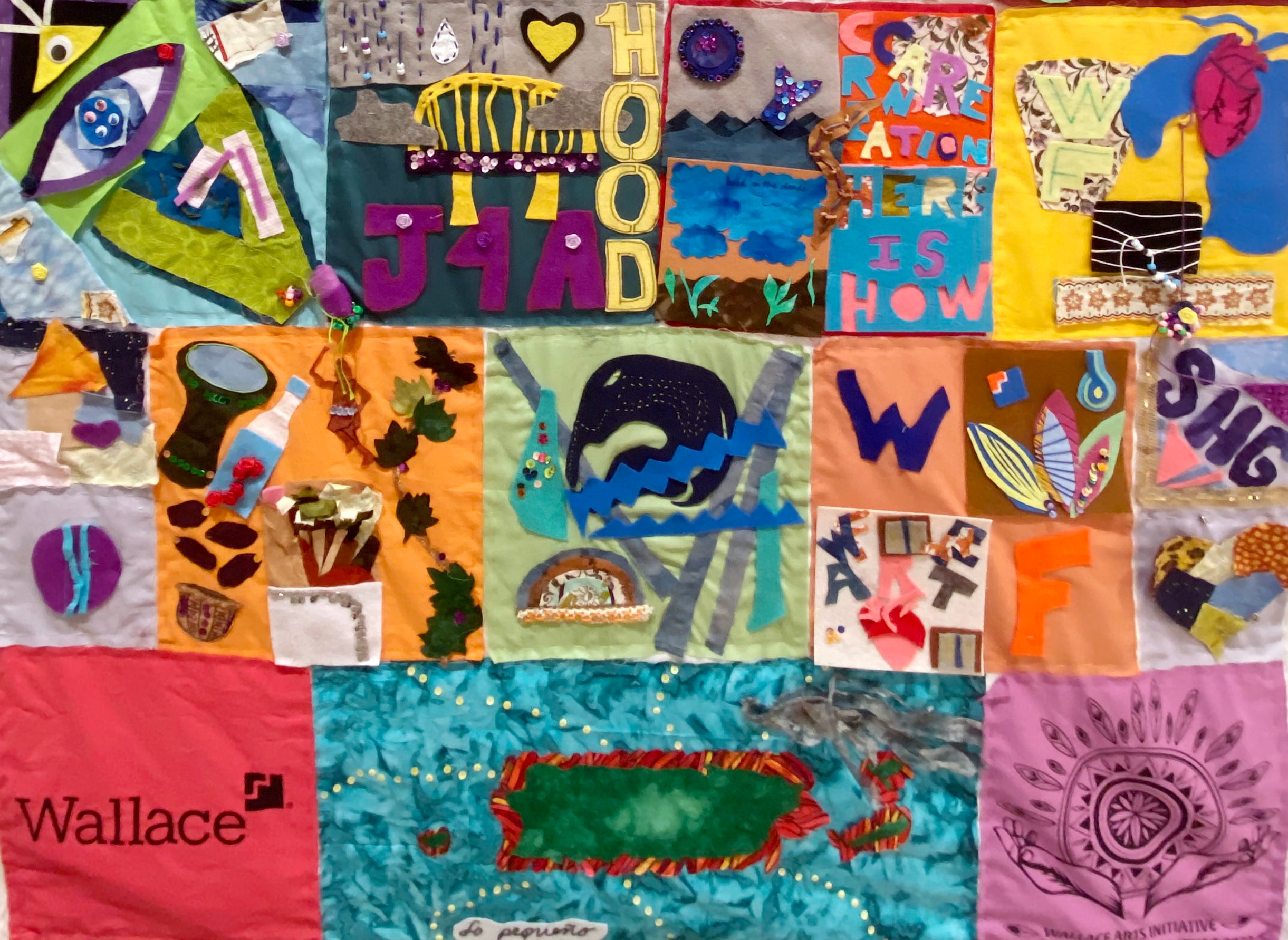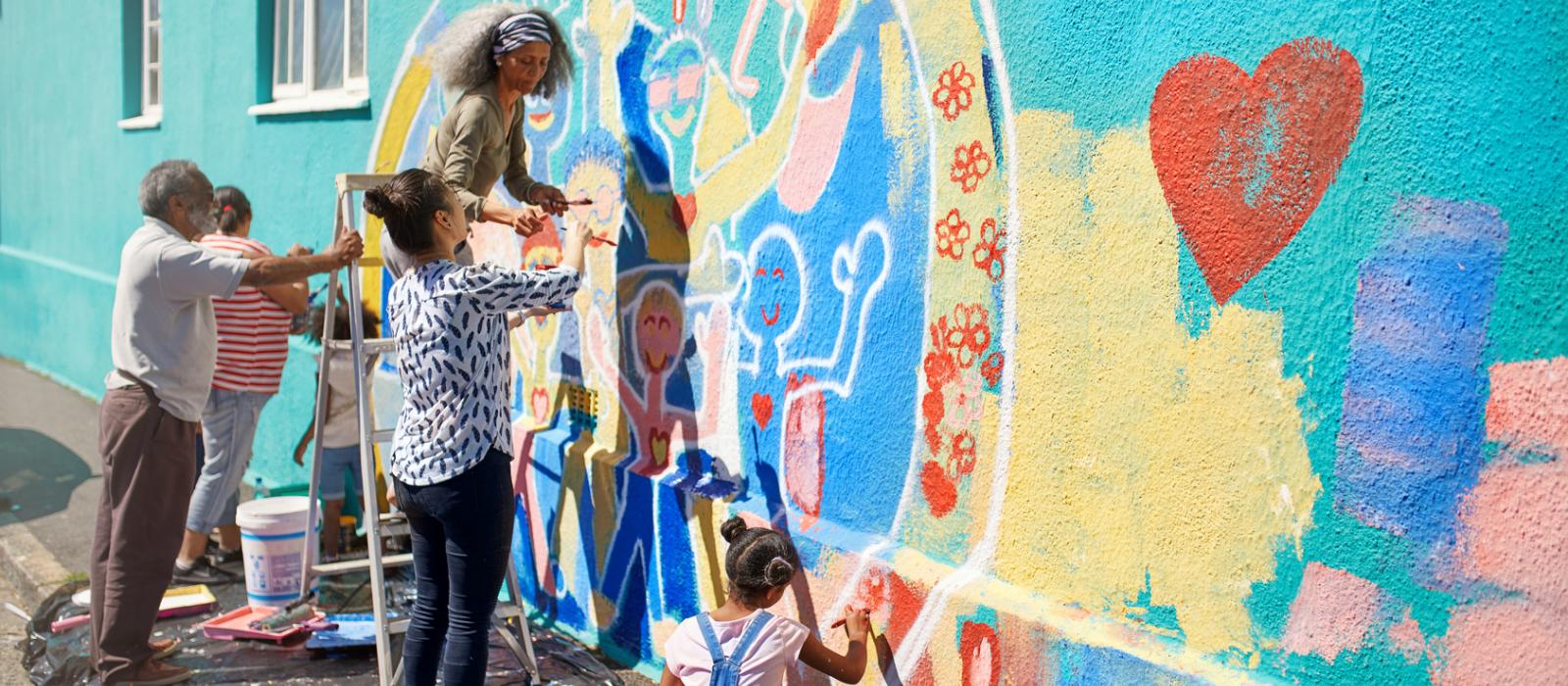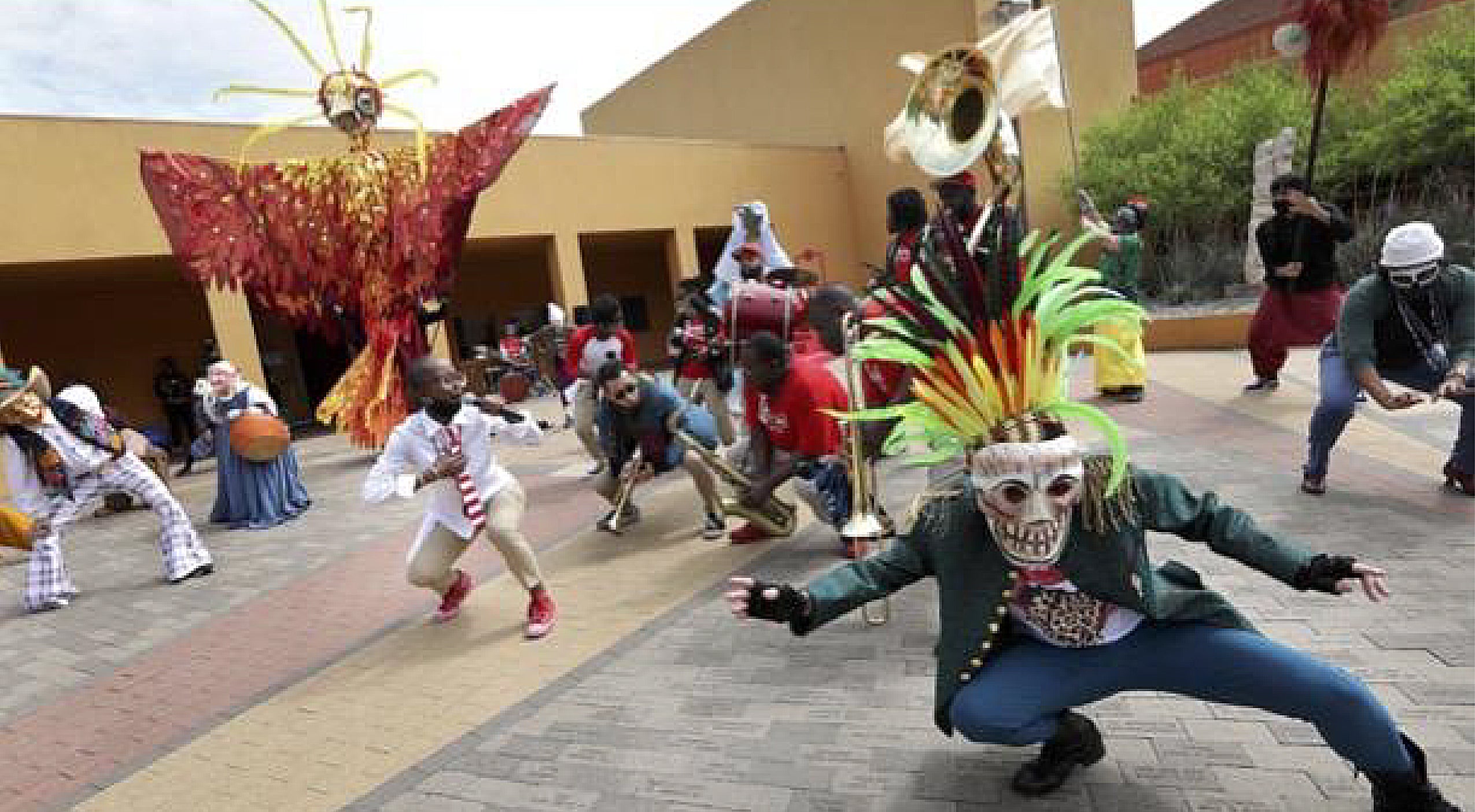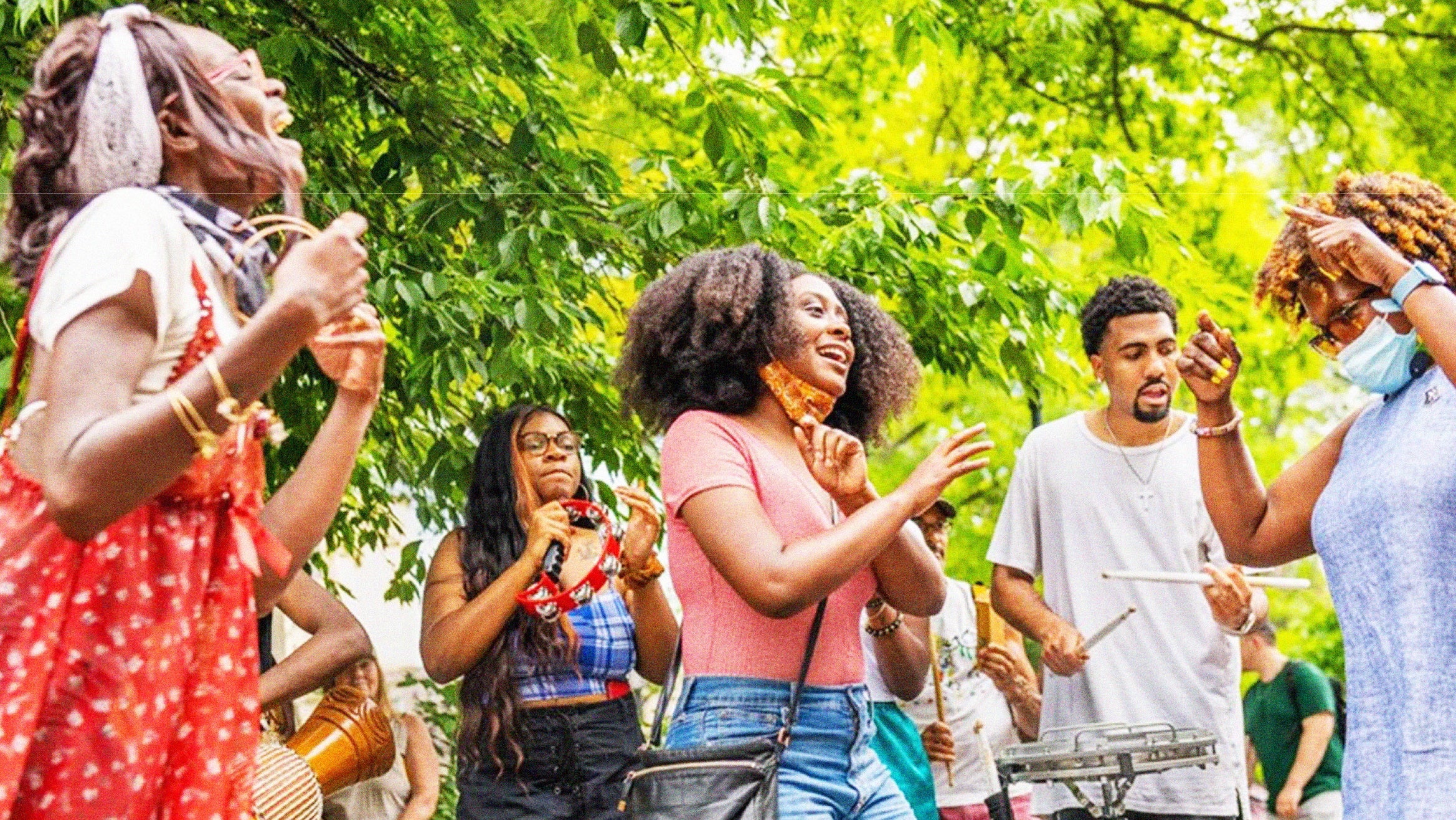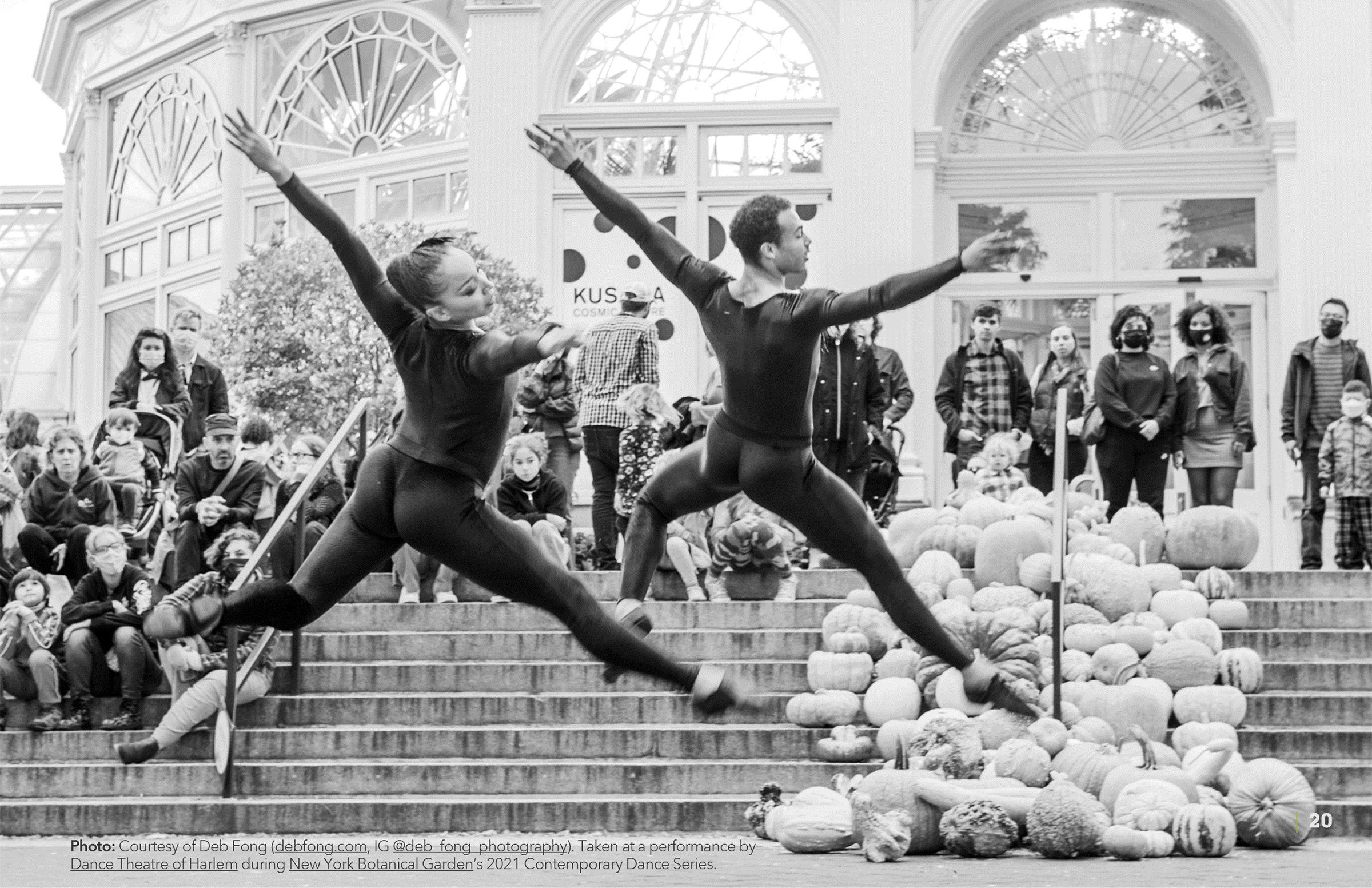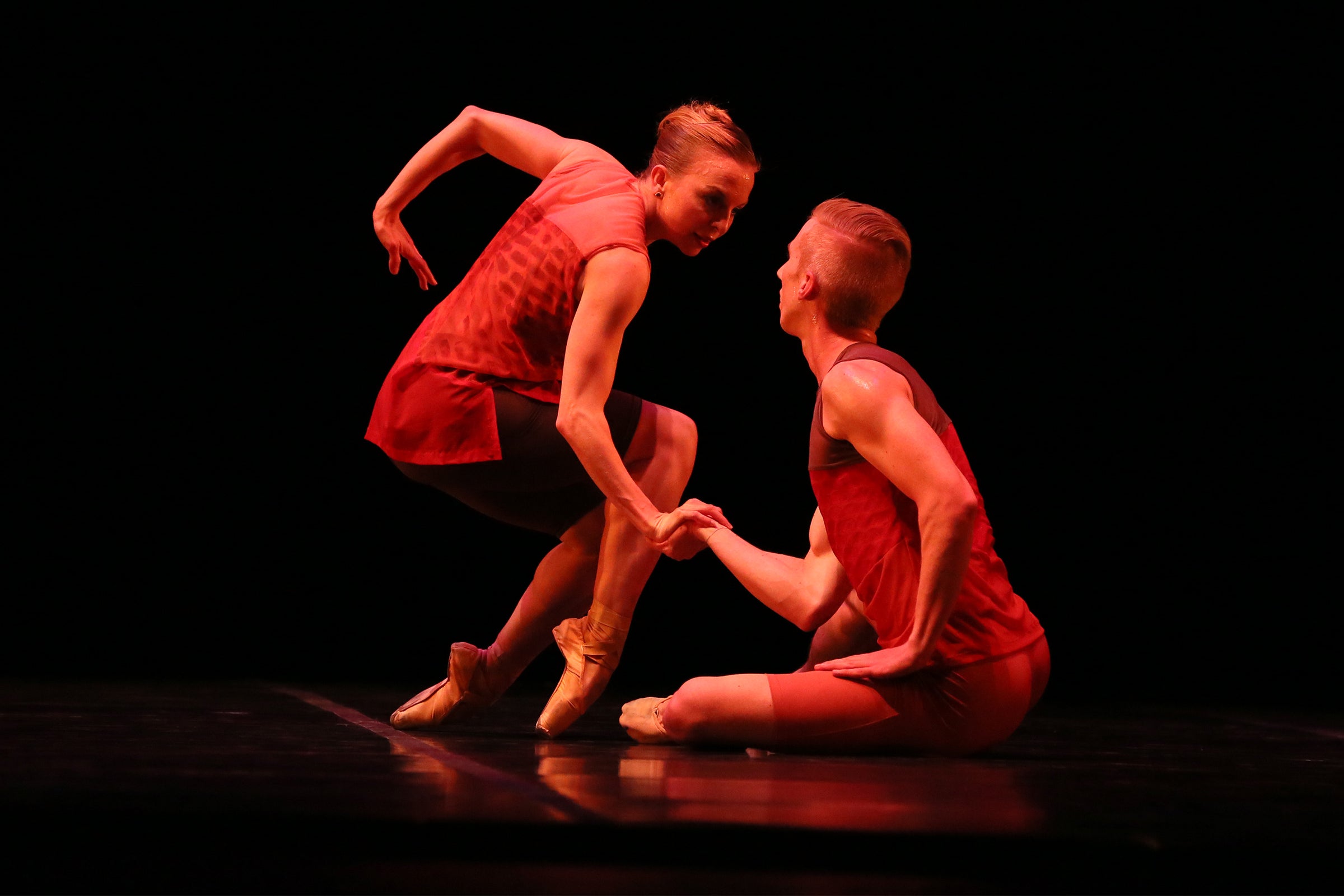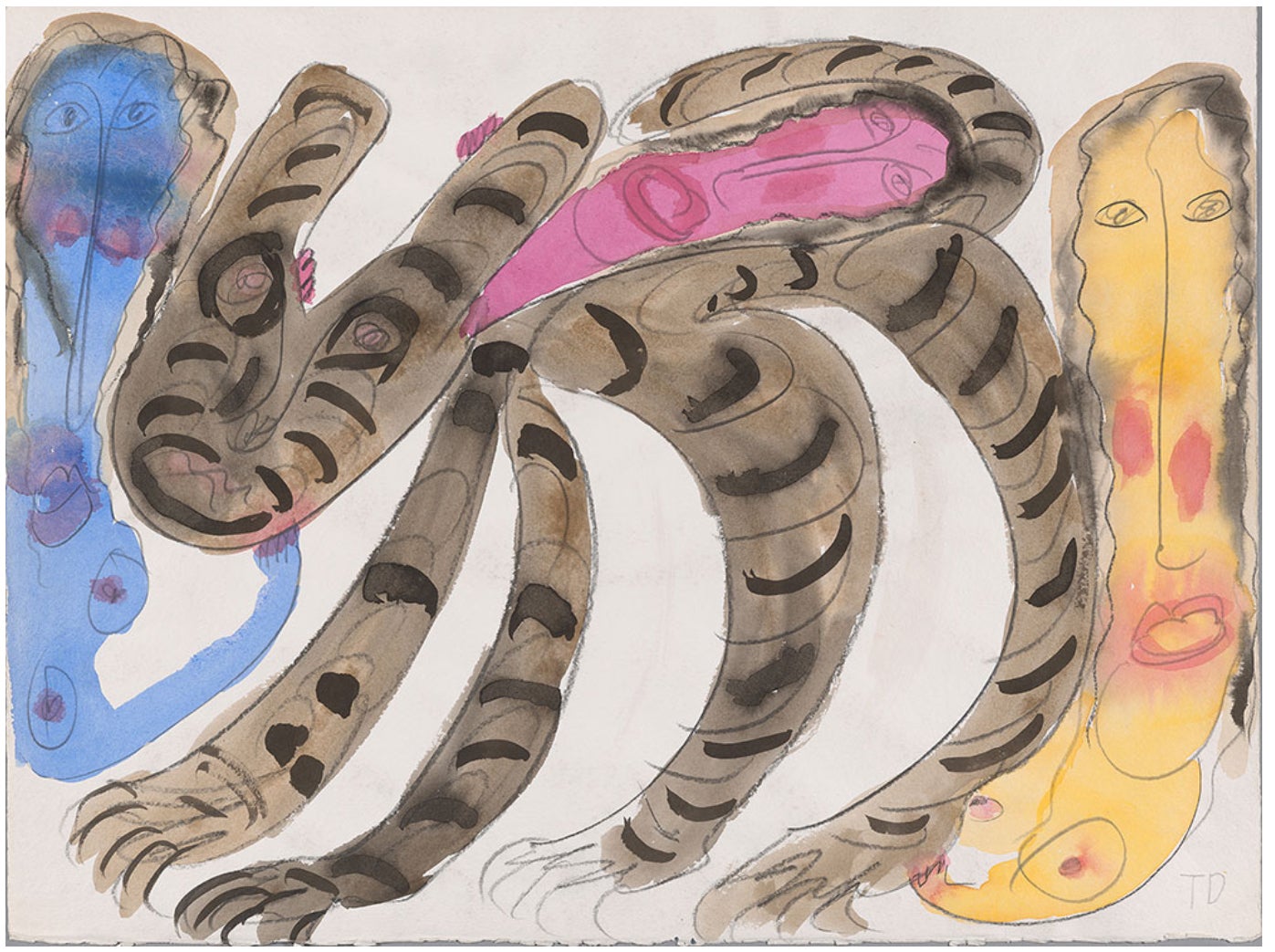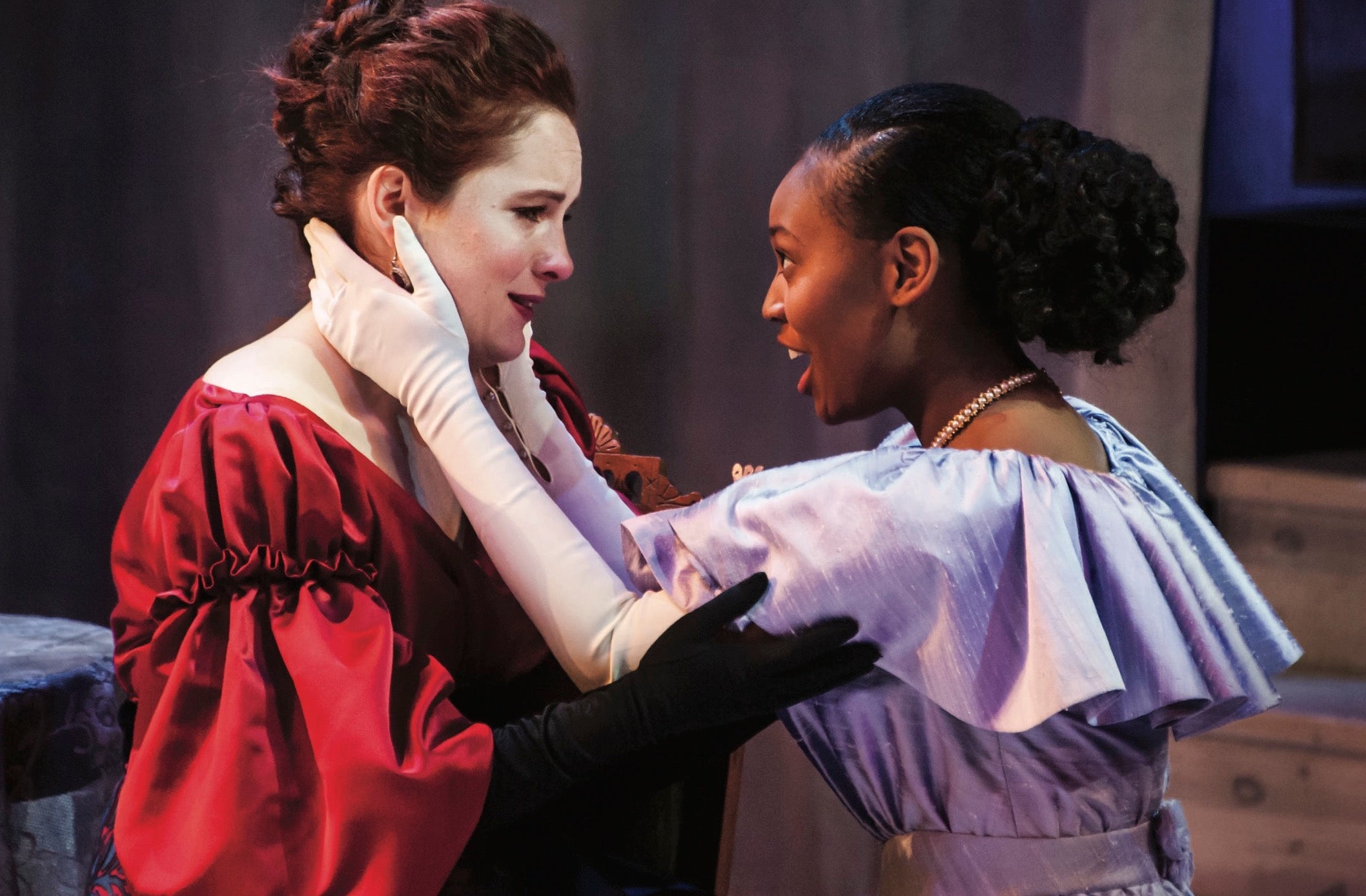Spotlight on Community Orientation
Chen Dance Center, New York City
By H.T. Chen, artistic director, and Dian Dong, partner and company member
Essentially, for our organization, we are totally mission driven. We just don’t know any other way. When we first moved into 70 Mulberry Street in the heart of Chinatown, people called us “La MaMa-Chinatown.” Ellen Stewart was a founding board member of our company and we got our start there.
In January 2020, the entire 70 Mulberry Street building burned down and we have been displaced since then. From our three dance studios, piano rooms, theater, archives, storage and office, only 5% of the items from the office were retrieved from the fire, which we now keep in a mini-storage unit.
Nevertheless, we continued to provide for the community through online classes and alternative programming. You always want to give the best and manage to deliver under all kinds of circumstances. At one point, the two of us used the mini-storage unit to teach from, while our teachers were teaching from their apartments. Success is how you can continue working with your artists for the long term. Make the artists, students, community members valued and you build trust. We have always believed that “good art has social value.”
From a more practical point, long-term success is due to thinking through how to turn each dollar into $3, or a smaller engagement into a larger project. H.T. Chen & Dancers has toured to many sites, but never did only what the presenter expected of us; we always did more. For example: For a 2006 residency at CSU Fresno, the company made an advance site visit on our own to learn more about the surrounding area, which included a large Laotian resettlement community of farmers. We returned with a local phone book and made calls from NYC to arrange free dance workshops for the children in this community. A small team arrived three days before the full residency to begin dance workshops and a performance for the refugee children.
We feel that it isn’t enough just to do a performance or a residency. It’s really an opportunity to impact a community.
We’re always full of ideas and pack everything we can into every moment of engagement. At the end of the CSU residency, we were treated by the Laotian families to a summer feast. One farmer donated a pig and another donated a cow. It was the most delicious spicy meal, eaten in 113-degree Fresno Valley weather. THAT made the residency really complete. It’s the approach of, “… and while we are there …” do something meaningful. Forge relationships wherever you go.
Spotlight on Mission Alignment
Chinese Culture Center of San Francisco
By Jenny Leung, executive director
The success of CCC’s growth started with the vision – a big idea and great art. Beginning in 2009, CCC’s new executive and curatorial leadership led the organization through a major transformation, and made a dedicated shift from preserving traditional Chinese culture to elevating the underserved through art by being a bold voice for immigrants, women, and those who are queer, trans, people of color. The team of three strong women (executive director, artistic director, and exhibition manager) overcame many challenges and succeeded in building CCC as a safe environment for artists who champion activism, resistance, and social transformation.
Prior to 2009, CCC meant many things to many people, and it produced a broad range of programming, from In Search of Roots for young people of Chinese American heritage to traditional art exhibitions and tea tasting. While these programs were engaging and well attended, the public didn’t understand CCC’s impact nor its relevance to the rapidly changing world.
By 2020, CCC became known as a loud creative voice to empower social and economic transformation. It has built a network of 400 artists from the Asian American community as well as national and international artists who are dedicated to sparking dialogues on equality, justice, and global concerns. CCC’s collaborators include government and private sector partners as well as museums, art/cultural institutions, and social service and activist organizations.
The transformation was not easy. First, CCC had to cut some programs that didn’t align with its vision. We also lost some donors because they didn’t agree with the direction. However, through the implementation of the new vision, we gained many more new supporters and built meaningful partnerships with a shared vision. It took almost a decade to cultivate a growing family of support through donors, stakeholders, volunteers, and artists. The lessons we learned were: confidence, perseverance, belief in ourselves and to build teamwork with staff, board members, and core donors.
The “XianRui (Fresh and Sharp)” program was conceptualized in 2008, and is still the only exhibition series in the United States devoted to supporting mid-career artists from the Chinese diaspora. Stanford professor Dr. Gordon H. Chang noted that the series established “CCC as an outstanding venue of contemporary art [through] spectacular presentation.” The careers of the artists have blossomed with this investment.
The lessons we learned were that artists need consistent infrastructure support as well as curatorial encouragement to break the glass ceiling. As there is a stigma that stereotypes Chinese artists as un-creative alongside the model minority myth, CCC’s vision must not be afraid to deconstruct stereotypes and shift narratives. As our vision became clearer, we learned how to engage our community and the spectrum of its stakeholders around the vision. “Museum Without Walls” is CCC’s vision and engagement strategy to mobilize community members and activate public spaces by holding cultural events in vacant storefronts, alleyways, parks, and sidewalks. One example is “Sky Bridge,” a temporary public art project that transformed a pedestrian bridge into a silver walkway by artist Beili Liu. It was named “Best Public Art” by KQED, a PBS affiliate in the Bay Area, and years later it is still a project for which people come back and talk about its vivid memory and impact.
When CCC launched its transformation a decade ago, it was a big risk in committing to the vision and investing in “new” artists, and there was uncertainty if the transformation was the right choice for the organization. Now, there’s buy-in. We have begun to change the minds of stakeholders and supporters around a shared vision about what contemporary artists can bring to the community, contemporary art as a space for relevant discourse, and its ability to connect people and build community. It is a journey – we are constantly learning and refining our work in alignment with our mission. We have had incredible talents that we have incubated to lead this vision, the leadership of Abby Chen, and now Hoi Leung. Invest in great art, people, and a big vision.
Spotlight on High-Functioning Board
Dallas Black Dance Theatre
By Zenetta Drew, Executive Director
We create an environment that breeds excellence through internal and public accountability for achievement of the organization’s strategic vision. That’s what allows the financial success to flourish. As the organization grows in size and moves through each new phase of organizational development, we create new policies and practices that do not follow many of the traditional nonprofit practices but are tailored to meet the needs and results desired by the organization. We support excellence with a number of tenets that we’ve put in place. One tenet created early in the organization’s plan for sustainability was to develop a comprehensive board accountability report that manages membership retention, volunteer participation, parity, and/or removal from the board.
Created in 1988 and the first in the nation, our board report card allows the organization to meet and manage its goal of 100% participation annually, whatever the approved board giving level. This participatory process in resource development sets the basis for revenue and budget goals, increasing in all areas where the board has resources. In 1995, the board decided to elevate the excellence standard over traditional business operating paradigms by making innovation, strategic risk, and development of new “thought leadership” in the arts industry a part of the organization’s strategic plan and annual performance requirement of the executive director. DBDT has introduced 14 new thought leadership ideas into the industry over the past 30 years.
To ensure a focused and aligned financial and budget management process, in 1990 the organization instituted a line-item budget and cash forecast with detailed accountability for staff and board that also includes a line item written operating plan that is a required component of the board approval process. This limits the capacity for board members to redirect the focus of the organization’s budget achievement efforts toward introducing new ideas during the year that create disruption to goal achievement, and dilute the energy and fundraising focus of the board. New ideas are vetted for resources (both funding and personnel) required and considered for implementation during the next business cycle. Board members offering new ideas are asked to take responsibility to bring required resources to assist in implementation and can’t create their own initiatives for fundraising outside of what’s been approved. No board member or staff is allowed to make unauthorized approaches for fundraising without coordination with the development team. All of the success and communication with funders and donors is very tightly planned and managed.
Many board members for organizations of color and those serving on smaller non-traditional arts organizations don’t have the experience of being on a large-budget organization board, so they are extremely hesitant to ask for money, even though they understand that is part of their fiduciary responsibility. On this board, you can’t just show up. Small organizations of color need more than just time and influence; board member fundraising is a must and often there’s reluctance due to personal histories. With the transition of America’s racial inclusion and access to capital having changed significantly over the past 50 years, many individuals of color have watched their parents have to beg and ask society to meet their needs and have vowed to now never ask anyone for anything. Most small organizations recruit people who have a reservoir of resources but have not been armed with the proper resources and training to feel comfortable making “the ask.” In putting together a financial plan you have to look at the social and behavioral strategies that will embolden goals to be met. There are a lot of historic operating intricacies that were built for large white organizations regarding board policies, fundraising structures, and financial practices that don’t work for organizations of color and must be revamped to achieve a high-functioning organization.
We codified board composition, policies, and behavioral values. We look for capacity and skills – what do we need on the board? What are the infrastructure needs of the organization? When you have a business issue you need someone you can turn to with expertise. We don’t just look for money. We want no gaps in how the business is run. We removed term limits and limits on board size, and have allowed members who relocate to participate via technology since 1996. The board leadership structure is based on who can lead the organization given where we are and the environment we’re in. It’s always about “the good of the whole.” With most volunteers having limited time and many involved with multiple organizations, we sought to ensure efficiency and effectiveness in board meetings with a tightly structured, one-hour timed agenda. This practice has helped ensure prior preparation, problem-solving outside of meetings, and reduced opportunities for loss of meeting focus. This meeting structure has led to long-term board member participation (average 10+ years) and organizational sustainability and buy-in.
